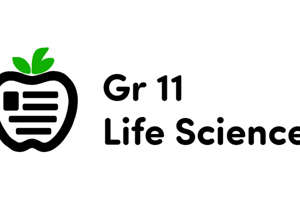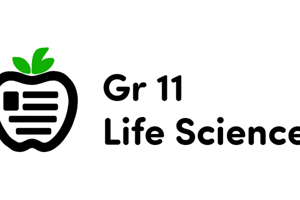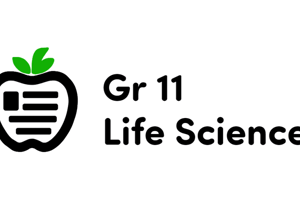Podcast
Questions and Answers
What should a marker do if a candidate provides more information than the maximum marks allocated?
What should a marker do if a candidate provides more information than the maximum marks allocated?
- Mark only the last few points provided.
- Continue marking until all information is evaluated.
- Credit all the information if it is relevant.
- Stop marking and note 'max' in the right-hand margin. (correct)
If a candidate provides five reasons when only three were required, how should the marker proceed?
If a candidate provides five reasons when only three were required, how should the marker proceed?
- Mark all five reasons provided.
- Disregard the answer entirely.
- Mark only the two most relevant reasons.
- Mark the first three reasons only. (correct)
What happens if a candidate presents a process in full detail when only a part was required?
What happens if a candidate presents a process in full detail when only a part was required?
- Stop marking after the required part is identified.
- Credit only the first part of the answer.
- Provide feedback for being overly detailed.
- Mark the complete answer for full marks. (correct)
In what scenario will descriptions be accepted when comparisons are asked for?
In what scenario will descriptions be accepted when comparisons are asked for?
What is the consequence if a candidate presents paragraphs instead of a required tabulation?
What is the consequence if a candidate presents paragraphs instead of a required tabulation?
What happens if a candidate provides a diagram with annotations instead of a written description?
What happens if a candidate provides a diagram with annotations instead of a written description?
What happens if a student's answer fits the correct sequence but is numbered incorrectly?
What happens if a student's answer fits the correct sequence but is numbered incorrectly?
If a candidate's answer contains non-recognized abbreviations that are not defined, what should the marker do?
If a candidate's answer contains non-recognized abbreviations that are not defined, what should the marker do?
Under what condition are spelling errors accepted in answers?
Under what condition are spelling errors accepted in answers?
Which criterion must be met for common names used in terminology to be accepted?
Which criterion must be met for common names used in terminology to be accepted?
What action should a marker take if a candidate's sequence of responses is muddled?
What action should a marker take if a candidate's sequence of responses is muddled?
What is the consequence of not providing units in measurements on an answer?
What is the consequence of not providing units in measurements on an answer?
What should markers be sensitive to when evaluating answers?
What should markers be sensitive to when evaluating answers?
What is required for all illustrations included in answers?
What is required for all illustrations included in answers?
What should markers consult regarding code-switching of official languages in answers?
What should markers consult regarding code-switching of official languages in answers?
What must not occur concerning changes to the memorandum?
What must not occur concerning changes to the memorandum?
What is the primary function of the endometrium in the female reproductive system?
What is the primary function of the endometrium in the female reproductive system?
Which structure is responsible for the formation of haploid sperm cells?
Which structure is responsible for the formation of haploid sperm cells?
What triggers the process of ovulation in the female reproductive cycle?
What triggers the process of ovulation in the female reproductive cycle?
Which of the following statements about external fertilization is true?
Which of the following statements about external fertilization is true?
Which hormone primarily promotes the development of ovarian follicles?
Which hormone primarily promotes the development of ovarian follicles?
What is the main function of the cochlea in the ear?
What is the main function of the cochlea in the ear?
What is the outcome of elevated levels of aldosterone?
What is the outcome of elevated levels of aldosterone?
What role does auxin play in plant growth?
What role does auxin play in plant growth?
What structural feature of the iris aids in its function?
What structural feature of the iris aids in its function?
What occurs during the process of leaf abscission influenced by abscisic acid?
What occurs during the process of leaf abscission influenced by abscisic acid?
Flashcards
Marking Principle: Max Marks
Marking Principle: Max Marks
If more information than requested is provided, only the specified amount is marked, the excess is ignored.
Marking Principle: Relevant Parts
Marking Principle: Relevant Parts
Partial answers that are relevant to the question are credited.
Marking Principle: Comparisons
Marking Principle: Comparisons
Clear differences or similarities are required for comparison questions.
Marking Principle: Tabulation
Marking Principle: Tabulation
Signup and view all the flashcards
Marking Principle: Diagrams
Marking Principle: Diagrams
Signup and view all the flashcards
Marking Principle: Flowcharts
Marking Principle: Flowcharts
Signup and view all the flashcards
Marking Principle: Sequence
Marking Principle: Sequence
Signup and view all the flashcards
Marking Principle: Abbreviations
Marking Principle: Abbreviations
Signup and view all the flashcards
Marking Principle: Numbering Errors
Marking Principle: Numbering Errors
Signup and view all the flashcards
Marking Principle: Language Usage
Marking Principle: Language Usage
Signup and view all the flashcards
Marking Principle: Spelling
Marking Principle: Spelling
Signup and view all the flashcards
Marking Principle: Common Names
Marking Principle: Common Names
Signup and view all the flashcards
Marking Principle: Letter vs Word
Marking Principle: Letter vs Word
Signup and view all the flashcards
Marking Principle: Units
Marking Principle: Units
Signup and view all the flashcards
Marking Principle: Answer Sensitivity
Marking Principle: Answer Sensitivity
Signup and view all the flashcards
Marking Principle: Illustrations
Marking Principle: Illustrations
Signup and view all the flashcards
Marking Principle: Code-switching
Marking Principle: Code-switching
Signup and view all the flashcards
Marking Principle: Memoranda Changes
Marking Principle: Memoranda Changes
Signup and view all the flashcards
Multiple-choice Questions
Multiple-choice Questions
Signup and view all the flashcards
Short-answer Questions
Short-answer Questions
Signup and view all the flashcards
Homeostasis
Homeostasis
Signup and view all the flashcards
Mitochondria
Mitochondria
Signup and view all the flashcards
Choroid
Choroid
Signup and view all the flashcards
Study Notes
Marking Principles for Life Sciences Examinations
- Maximum marks are marked with a wavy line and 'max' in the margin if more information than allocated is provided.
- For instance, if three reasons are requested but five are given, only the first three are marked.
- Relevant parts of a response are credited even if only part of a whole process is required.
- Comparisons need clear differences or similarities; acceptable if described or compared effectively.
- Candidates lose marks if paragraphs are used instead of required tabulation; tabulation is essential.
- Diagrams with annotations, when descriptions are asked for, will lead to a loss of marks.
- Flow charts instead of descriptive answers will not receive credit.
- Sequence correctness matters; incorrectly sequenced answers lose credit until the sequence resumes correctness.
- Non-recognised abbreviations must be defined to receive credit; undefined abbreviations will not be credited.
- Wrong numbering of answers fitting the correct sequence is acceptable.
- Language usage must maintain intended meaning; incorrect meaning leads to disqualification of the answer.
- Recognizable spelling errors are accepted unless they alter the context in Life Sciences.
- Common names in terminology may be accepted if previously recognized.
- Answers requiring only a letter should not receive credit if given as a full name and vice versa.
- Measurements must include units; lack of units results in lost marks.
- Sensitivity to the meaning of answers is important even when phrased differently.
- All illustrations must have captions for clarity and reference.
- Code-switching (using terms in other official languages) is acceptable if correct.
- Changes to official memoranda require consultation with moderators before acceptance.
- Only authorized memoranda with relevant signatures from moderators should be used for marking.
Section A: Marking Guidelines Overview
- Multiple-choice questions assess fundamental knowledge with 10 questions worth 2 marks each.
- Short answer questions include topics such as homeostasis and cellular structures.
Key Terms in Life Sciences
- Homeostasis: Maintaining internal stability.
- Mitochondria: Powerhouses of the cell, involved in energy production.
- Alzheimer's Disease: A progressive neurological disorder characterized by memory loss.
- Choroid: Layer of the eye supplying oxygen and nutrients to the retina.
- Precocial Development: Species born in advanced stages, capable of independent movement.
- Islets of Langerhans: Clusters of pancreatic cells that produce hormones like insulin.
- Acrosome: A cap-like structure on sperm, essential for fertilization.
- Umbilical Artery: Carries deoxygenated blood from the fetus to the placenta.
Nervous System Components
- Peripheral Nervous System: Connects the central nervous system to limbs and organs.
- Autonomic Nervous System: Controls involuntary bodily functions.
- Spinal Nerves: Enable communication between the spinal cord and the body.
Ear Anatomy
- Semi-circular Canals: Part of the vestibular system; helps with balance.
- Ossicles: Three small bones in the middle ear essential for sound transmission.
- Eustachian Tube: Equalizes ear pressure.
- Oval Window: Membrane-covered opening to the inner ear.
Section B: Human Reproductive and Hormonal Processes
- Endometrium: Lining of the uterus, critical for implantation.
- Fertilization: Fusion of sperm and ovum nuclei to form a zygote.
- Zygote Development: Undergoes mitosis to form the morula, then the blastula.
- Role of Muscular Uterus: Protects the fetus, flexible and hollow for growth.
Hormonal Regulation in Reproductive System
- LH (Luteinising Hormone): Stimulates ovulation and hormone production in ovaries.
- Impact of Hormonal Imbalance: Absence of ovulation leads to no fertilizable egg and potential failure of implantation.
Sperm Production
- Meiosis in Seminiferous Tubules: Diploid germinal cells divide to produce haploid sperm under testosterone influence.
External Fertilization Strategy
- Increased Chances of Fertilization: Releasing numerous gametes helps combat predation or environmental loss.
Sensory Functions
- Cochlea (Hearing): Converts sound vibrations into nerve impulses.
- Responding to Stimuli: Sensory receptors convert environmental information into nerve signals.
Changes in Blood Flow and Temperature Regulation
- Increased Blood Flow: Enhances heat loss or stimulates sweat production during thermoregulation.
Plant Hormones (Auxins)
- Role of Auxins: Promotes root growth, influences stem bending in response to gravity.
Renal Physiology
- Aldosterone Effects: Increases renal tubule permeability to reabsorb more salt and water.
Adrenal Response to Stress
- Adrenaline Effects: Boosts glycogen breakdown to glucose, increases heart rate, and enhances oxygen transport.
Eye Structure and Function
- Iris Role: Controls the amount of light entering the eye through pupil constriction.
- Lens Function: Ensures proper light refraction for images to be focused on the retina.
Visual Disorders
- Astigmatism: Distortion caused by lens shape irregularity affecting vision clarity.
Accommodation Mechanism
- Ciliary Muscle Functions: Contracts to make the lens more convex for near vision, adjusting the focus.
Total Assessment
- Comprehensive understanding of life sciences concepts encompasses anatomy, physiology, and hormonal interactions crucial for sustaining life.
Studying That Suits You
Use AI to generate personalized quizzes and flashcards to suit your learning preferences.




